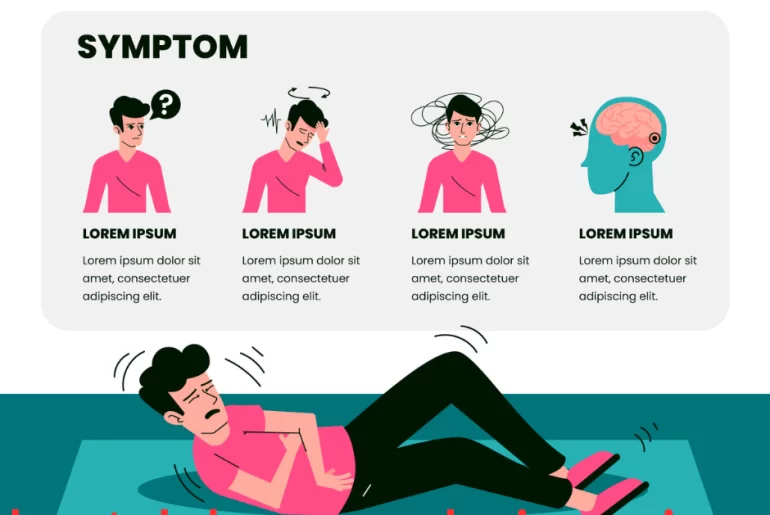When witnessing someone having a seizure, it can be a frightening and distressing experience. However, knowing how to help in such a situation is crucial, as timely intervention can greatly assist the person and potentially prevent further harm. Seizures occur due to abnormal electrical activity in the brain and can vary in their intensity and duration. In this guide, we will discuss the steps you can take to provide immediate aid to someone having a seizure. By understanding what to do and remaining calm, you can make a significant difference in ensuring the person’s safety and well-being during this challenging time.
Table of Contents
How to Help Someone Having a Seizure?
When providing first aid for seizures, it is important to prioritize the person’s safety and well-being. Here are some steps to follow:
Stay calm
Keep yourself composed and try to reassure others around you.
Protect the person from injury
Remove any nearby sharp objects or dangerous items that could harm them. Cushion their head with something soft, like a folded jacket or towel, to prevent head injury.
Do not restrain the person
Allow the seizure to run its course and avoid holding them down or trying to stop their movements. It is important to let the seizure complete naturally.
Clear the area
Create a safe space by clearing away furniture or objects that could cause harm during the seizure.
Time the seizure
Take note of the seizure’s duration. If the seizure lasts longer than five minutes or if the person has difficulty breathing afterward, call for emergency medical assistance immediately.
Protect the airway
If the person is lying on their back, gently roll them onto their side to help keep their airway clear. This can prevent them from choking on saliva or vomit.
Do not put anything in their mouth
Contrary to common belief, it is unnecessary and potentially harmful to put anything, including your fingers, into the person’s mouth during a seizure. This could cause injury to their jaw, teeth, or tongue.
Stay with the person
Stay by their side and monitor them until the seizure ends naturally. Offer reassurance and comfort once they regain consciousness.
Note any details
If possible, observe and take note of any important details about the seizure, such as the duration, movements, or any unusual behaviour exhibited. This information can be helpful for medical professionals.
Safety measures for seizures?
Implementing safety measures for seizures can significantly reduce the risk of injury. Consider the following precautions:
Create a safe environment: Make the person’s living space or regular surroundings safe by removing sharp objects, hard furniture corners, or other potential hazards. Arrange the environment to minimise the risk of injury during a seizure.
Install seizure alarms or monitors: Consider using seizure alarms or monitors that can alert you or others nearby when a seizure occurs. These devices can provide an extra layer of safety, especially if the person has frequent seizures or is at risk of injuries.
Use protective headgear: For individuals who have a high risk of head injuries during seizures, such as those with frequent falls or uncontrolled movements, protective headgear can be beneficial. Consult with a healthcare professional to determine if this measure is appropriate for the person.
Ensure proper supervision: If the person is prone to seizures or experiences seizures that significantly impair their awareness or mobility, it is important to have someone present to provide supervision and assistance, especially in potentially hazardous situations such as swimming or cooking.
Communicate with others: Inform family members, friends, coworkers, and relevant individuals about the person’s condition and how to respond during a seizure. Educating others about seizures can promote a supportive and safe environment.
Provide seizure first aid training: Consider receiving proper training in seizure first aid, which can equip you with the knowledge and skills to respond effectively during a seizure. This training can include learning about seizure types, appropriate actions to take, and when to seek medical assistance.
It’s crucial to consult with healthcare professionals, such as neurologists or epilepsy specialists, to develop personalised safety measures based on the specific needs and risks associated with the person’s seizures.
FAQ
Q1: What causes seizures?
Ans: Seizures can be caused by various factors, including epilepsy, head injuries, infections, and certain medical conditions.
Q2: How long do seizures usually last?
Ans: Seizure durations can vary, typically lasting from a few seconds to a few minutes. Prolonged seizures may require emergency medical attention.
Q3: Can seizures be prevented?
Ans: While it may not be possible to prevent all seizures, adhering to prescribed medications, managing triggers, and maintaining a healthy lifestyle can help reduce their frequency.
Q4: Should I call an ambulance for a seizure?
Ans: Call emergency services if a seizure lasts longer than five minutes, if it’s the person’s first seizure, if they are injured, or if they have difficulty breathing afterwards.


